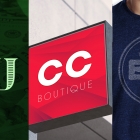Joy to the World Wide Web
Remember the good old days of using a favorite catalog to write your Christmas list? My companion was a classic behemoth that became my toy-shopping bible, happily lugged from place to place while I daydreamed about the Barbie Dream House and EasyBake Oven that Santa had, no doubt, set aside for me.
It was a sad day when, due to changing lifestyles and so-called “advances” in technology, these Christmas catalogs became just a fond memory. Since the Sears Wish Book—one of the last to succumb to the advent of the web—was discontinued in 1993, a whole generation of children has missed out on this cherished holiday pastime.
But no longer must the nation’s youth bookmark toy websites in the world-wide web’s virtual catalog! At long last, the Sears Wish Book is being resuscitated. The updated version will be trimmed from 700 to only 188 pages, but the nostalgia of dog-earing your favorite pages remains the same.
The catalog’s return also reconnects us to (oh, happy day!) human operators who can answer questions and offer advice relating to size, color and shipment—a dynamic that is often lost on the internet.
Sears is not alone in its marketing venture. “Our catalog is itself an advertising vehicle, and it is an effective way to drive traffic to our website," said Mary Rose MacKinnon, an L.L. Bean spokesperson. According to Advertising Age, retailers report that 13% of their new online customers last year came because of catalog mailings; conversely, about 43% of catalog customers also buy online. According to Bette Kahn, spokesperson for Crate & Barrel, "There's no question, when people receive the catalog, it's a call to action. It brings them into the stores as well as online."
How long can the real world and the virtual world continue to peacefully co-exist in the wonderland of holiday shopping? The jury’s still out, but let’s hope it’s at least long enough to return all those wrong-sized clothes…
 An agency-eye view of Marketing, Advertising, Branding, Design & Media.
An agency-eye view of Marketing, Advertising, Branding, Design & Media.




